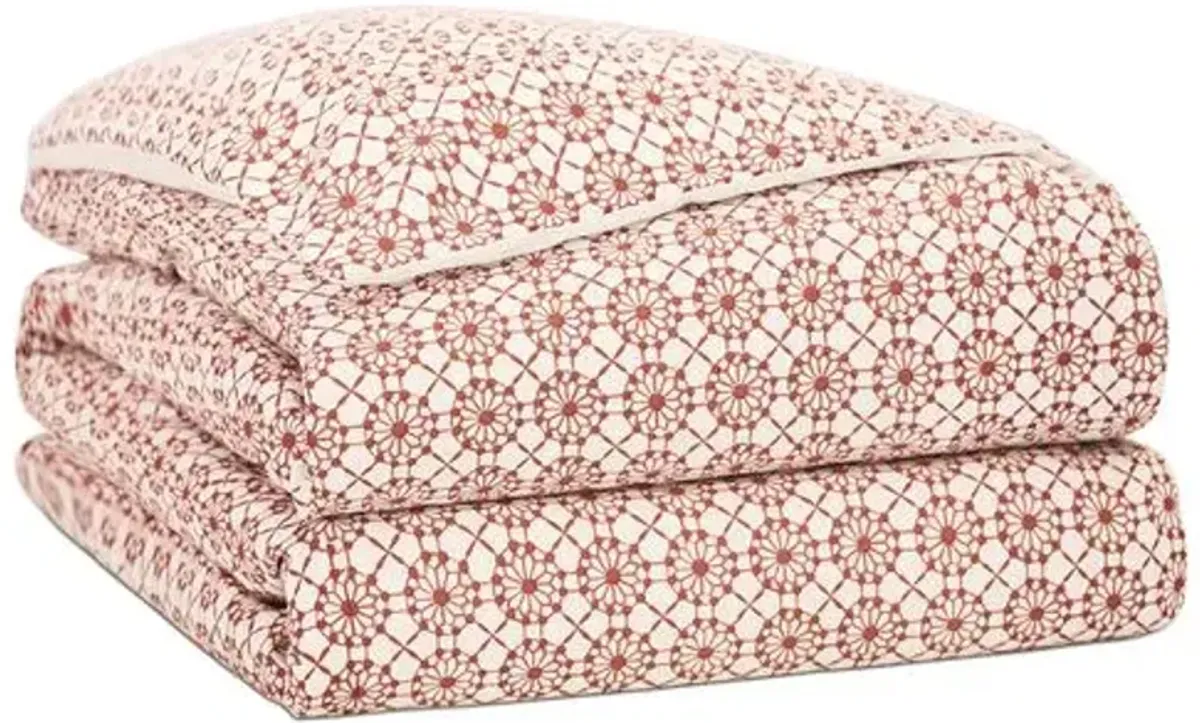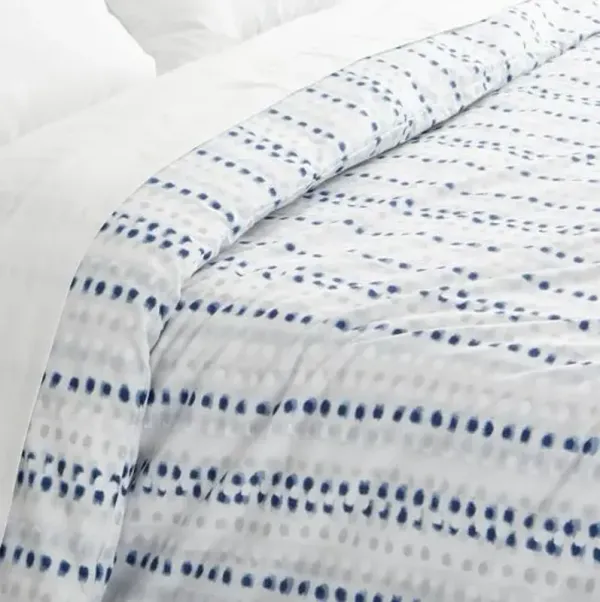You're on the list
By signing up, you agree to receive email marketing.























Anyone chasing a restful night’s sleep knows how much thought goes into choosing the proper bedding. A duvet cover is a removable layer that holds a comforter or insulating insert for beds of all sizes. As you’re creating your own sleep sanctuary, a duvet cover can be a soft, hassle-free way to add comfort and style to your bedroom. Check out our guide to make choosing a duvet easy.
There can be some confusion surrounding the difference between a duvet cover and a comforter. A duvet cover does not add any insulating elements, but can protect the inner duvet insulation from dust, dirt, and extra wear. Insulating materials are not meant to be washed frequently; and because a duvet cover is removable, regular washing can be done with ease.
A comforter can be found in a variety of weights and filling, and can stand alone as the insulated and decorative layer of bedding. A comforter does not require a duvet cover—although using a cover can help extend its use!—and can be washed separately.
Choosing a duvet cover comes down to the size of your bed and the desired look and feel you prefer.
A duvet is a type of blanket that works with two parts, a duvet insert, or comforter, and a duvet cover. The insert is usually quilted or stuffed like a comforter to add warmth and comfort. The cover goes over the outside to protect the insert.
Duvets can be made of a variety of fabrics, such as cotton, microfiber, or linen duvet covers. You can also get covers in a variety of colors and patterns so you can change up your bedroom decor without needing several bulky blankets to switch between. Simply put a different cover on your insert for a whole new look. You can even get a complete duvet set with matching linens to keep your whole bedroom coordinated.
When it's time to clean and change your sheets and blankets, the duvet cover can be removed and washed without needing to wash and dry the fluffy insert. This reduces washing and drying time and is easier on your machines since they don't have to balance the load of a large, wet comforter or quilt.
When it comes to duvet vs. comforter, both are a type of blanket typically used on the bed. However, comforters are a single piece, while duvets work in two parts. A comforter is a type of stuffed blanket, usually filled with cotton or down. When you use a comforter, you have to wash it with the rest of your bedding to keep it clean.
A duvet adds an extra layer, a duvet cover, to protect the insert. The duvet insert doesn't need to be washed as frequently unless something soaks through the cover. Instead, the cover is removed and washed separately. Since the cover is usually thin like a sheet, it isn't as heavy or difficult to wash properly. Duvet covers can also protect quilts or weighted blankets that are more difficult to wash. They're easier to store, as well, since they fold flat like a sheet.
Many people find duvets to be warmer and fluffier, as well, since there's an extra layer or two to trap warmth. If you tend to be hot when you sleep, a comforter or even a flat sheet may be better. But if you want to be nice and toasty, a duvet will do the trick.
While you can technically use any comforter with a duvet cover, there are a few things to consider. First, you'll need to ensure you choose the right size. If a comforter is larger than the duvet cover, it will be lumpy when inserted. If the comforter is too small, it won't reach the corners, and it may slide around or cause the cover to bunch.
Actual duvet inserts designed for use with covers also typically have ties or clips in the corner to keep the insert in place within the cover. If you have a comforter with corner ties, this can be seamlessly used with a cover, but if it doesn't, you may need to buy separate duvet clips or ties to keep the insert from moving around.
You're on the list
By signing up, you agree to receive email marketing.